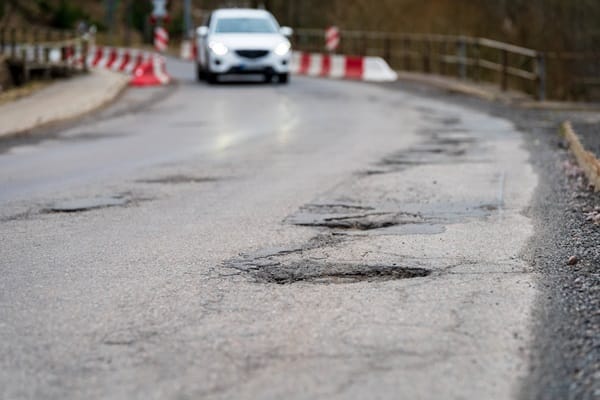The UK’s roads are in worse shape than ever. According to government data, the number of roads needing maintenance has increased over the past five years, and these dire conditions could be costing UK motorists hundreds or even thousands of pounds each year.
As the cost of living remains high, putting pressure on finances across the country, car part specialists, My Motor World, have broken down just how much the state of the UK’s roads could be hitting your wallet.
Please find all the information and commentary below and should you need any further details to make this feature work for you, the My Motor World team and I would be more than happy to help.
The RAC Pothole Index has revealed that pothole related breakdowns surged by a fifth at the end of 2024 compared to the previous quarter. Unfortunately, it’s even more bad news if you live in the countryside, as 2024 figures showed those in rural areas were more at risk of pothole damage.
Potholes can cause some serious damage to your vehicle. Best case scenario (and the most common) is a puncture, but more significant issues like rim damage and suspension issues can occur, along with misalignment, which can cause your car to mishandle. It’s estimated that repairs can cost drivers an average of £460, according to the RAC. If you do encounter pothole damage, you may be able to make a claim with the government for compensation.
The good news is that the government has set aside £1.6bn to help local governments address Britain’s pothole crisis. An extra £4.8bn has been allocated for maintaining and repairing the busiest roads, such as motorways and major A-roads, where improvements will make the biggest difference for drivers.
It’s not just potholes that are causing issues for our vehicles. Unfinished roads are becoming increasingly common across the UK. These roads have been left in their raw state, without being properly surfaced with asphalt or tarmac. This is particularly common in unfinished housing estates, an issue raised to the government in 2022 and investigated in 2024.
Unsurfaced roads tend to be covered in gravel and debris, which can cause dents and scratches in paintwork. If you were to get this repaired professionally, it could set you back anywhere from £60 to £210.
Your wheels are also at risk of punctures or dents, and constant pressure on your car’s suspension can cause wear to shocks and struts. This could cost anywhere from £200 to £3,500 to repair depending on the parts that need replacing and the model of your car.
The UK is prone to a bit of rain. But many of the UK’s roads are unprepared for our damp and drizzly weather with poor drainage issues causing headaches for motorists. Data from National Highways, as reported by New Civil Engineer, showed a 36% increase in flooding reports from 2022 to 2023, with a large number of incidents being on slip lanes and hard shoulders.
Data from Go.Compare has revealed that 17% of drivers would be willing to drive through flood water, which means 5.8 million cars are at risk of damage. If you do drive through deep water, you could risk flooding the engine and causing hydrolock. This is when water gets into the cylinders, stopping the engine from compressing air and fuel, causing a breakdown. The only solution is to replace the full engine, which can set you back anywhere from £1,000 to £5,000 or more, depending on the make and model of your vehicle.
Flood water can also put your brakes and electrical components at risk, or even lead to rust and corrosion if left untreated. To avoid costly repairs, the best course of action is to avoid flooded areas more than 10cm deep and taking an alternative route when possible. If you do need to drive through standing water, take it slow (around 3–4mph) to avoid creating a wave, and use higher revs than normal to prevent water from entering the exhaust. Again, you can report a flooded road to your local council.
“The state of our roads is only getting worse and it’s becoming a real, costly headache for many drivers. From potholes to unfinished surfaces and drainage issues, poorly maintained roads are causing some serious damage to our cars. While the government is putting pressure on local authorities to fix these issues, it’s up to drivers to take steps to protect their vehicles in the meantime.
“Take it slow when driving over rough, unsurfaced, or poorly maintained roads and make sure you check your tyre pressure regularly, as under-inflated tyres are more prone to damage, while over-inflated ones increase the risk of blowouts. Try to avoid potholes where you can and, as always, keep a safe stopping distance to give you enough time to react to potential hazards ahead.
“Staying alert and adjusting your driving to the road conditions can make a huge difference. Regular maintenance and quick repairs will also help keep your car in top shape and save you from unexpected repair bills.”— Mark Barclay, Head of Ecommerce at car parts specialists, My Motor World.








